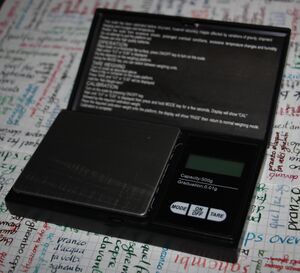Filling systems capacity
One of the criteria with which the filling system is chosen, especially in recent pens, is that of its capacity. It is also one of the criteria on the basis of which we most frequently take sensational dazzles, also because there is a widespread prejudice that a piston filler pen contains much more ink than a cartridge filler one, which, with pens on the market today, is almost never true.
The following table of cartridge capacity is used as a reference (the measures mentioned have been collected on the internet, and have not yet been verified with the methodology adopted later; when they will be, the relevant column will be updated):
| Brand | Type | Capacity | Verified |
|---|---|---|---|
| Pelikan | short | 0,77 ml | no |
| Parker | long | 1.47 ml | no |
| Sheaffer | slim | 1.20 ml | no |
| Sheaffer | standard | 1.50 ml | no |
| Internazional | long | 1.66 ml | no |
For this reason it was decided to start a collection of measures of the actual ink capacity of pens, but for a measure to qualify as such (and not be reduced to a simple statement), it must be repeatable, so in addition to the results of the same, the methodology used to obtain it must also be detailed.
The measurements have been carried out using a scale with sufficient precision, capable to appreciate the hundredth of a gram, first weighing the pen completely discharged, washed and totally dried (to avoid even the small error possibly introduced by the remaining ink in the feeder) and then loaded with water. For a comparison that takes into account the liquid remaining in the feeder, the weight was measured several times starting from the first empty and dry loading, repeating the loading and unloading cycles.
We measured several times (around 10) both the weight when the pen is loaded and when the pen is unloaded; the latter is used to estimate how much liquid remains in the feeder, but we took as an indication of the filling capacity the value with the pen fully filled, because pens are filled once the ink is finished and no longer reaches the nib, and this also includes the one present in the feeder. From the various measurements we obtained average and standard deviation.
The capacity in ml was then determined using the specific weight of the water which is 0,997 g/ml. The difference between tap water and pure water is below the appreciable limits of the measurement in centigrams, and inessential for the measurement whose accuracy is ±0.02 ml (sum of the systematic error of 0.01 g of the scale in the difference between two measurements, even if the error is always higher for a filled pen weight measurement), for the conversion, however, we can substantially assume an equivalence of 1 g => 1 ml being the difference below the measurement error.
Results
| Pen | Type | Empty | Filled | Unloaded | Capacity |
|---|---|---|---|---|---|
| Pelikan 140 | piston | 14,33 ± 0,01 g | 15,98 ± 0,04 g | 14,59 ± 0,03 g | 1.65 ± 0,05 ml |
| Duofold De Luxe | button | 22,10 ± 0,01 g | 24,00 ± 0,03 g | 22.35 ± 0,03 g | 1.90 ± 0,04 ml |
| Lamy 2000 ('60s) | piston | 20,88 ± 0,01 g | 22,68 ± 0,02 g | 21,59 ± 0,02 g | 1.80 ± 0,03 ml |
| Deco Band | lever | 22,82 ± 0,01 g | ± g | ± g | ± ml |
